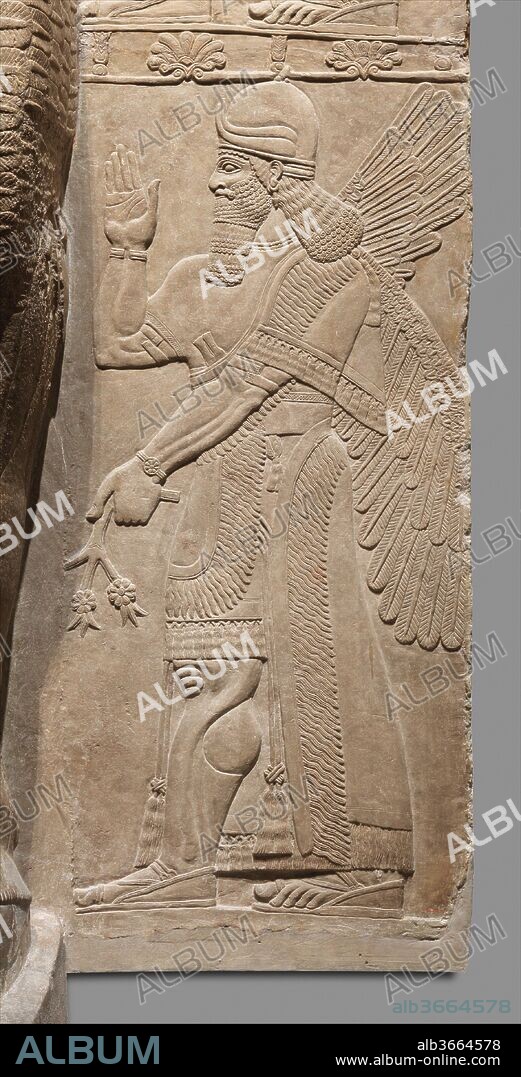alb3664578
relief panel

|
Zu einem anderen Lightbox hinzufügen |
|
Zu einem anderen Lightbox hinzufügen |



Haben Sie bereits ein Konto? Anmelden
Sie haben kein Konto? Registrieren
Dieses Bild kaufen.
Nutzung auswählen:

Titel:
relief panel
Untertitel:
Siehe automatische Übersetzung
Relief panel. Culture: Assyrian. Dimensions: 54 x 30 in. (137.2 x 76.2 cm). Date: ca. 883-859 B.C..
This panel represents a supernatural protective figure similar to those seen in the Northwest Palace at Nimrud (ancient Kalhu) but comes from another important structure at the same site, the Ninurta Temple. Like the palace, the Ninurta Temple was built by Ashurnasirpal II (r. 883-859 B.C.), and it is very likely that many of the same personnel were involved in producing the relief programs for the two buildings.
Ninurta was an important god in the Mesopotamian pantheon. In origin he was an agricultural deity, but for the Assyrian kings it was his association with war and victory that gave him particular significance. One relief from the Ninurta Temple depicts the god's most famous mythological exploit--recovering the "Tablet of Destinies," on which was written the future of humanity, from the Anzu bird, a demon who often appears in art as a lion-headed eagle.
The figure depicted here is winged and human-headed, and holds in his left hand part of a plant whose three branches end in rosettes. The meaning of this plant is unknown, but it is probably highly stylized and may not represent any real plants. Rosettes occur frequently in Assyrian art and have strong divine associations, particularly with the goddess Ishtar.
Technik/Material:
Gypsum alabaster
Zeitraum:
NEOASIRIO
Museum:
Metropolitan Museum of Art, New York, USA
Bildnachweis:
Album
Freigaben (Releases):
Bildgröße:
2369 x 4652 px | 31.5 MB
Druckgröße:
20.1 x 39.4 cm | 7.9 x 15.5 in (300 dpi)
Schlüsselwörter:


 Pinterest
Pinterest Twitter
Twitter Facebook
Facebook Link kopieren
Link kopieren Email
Email
